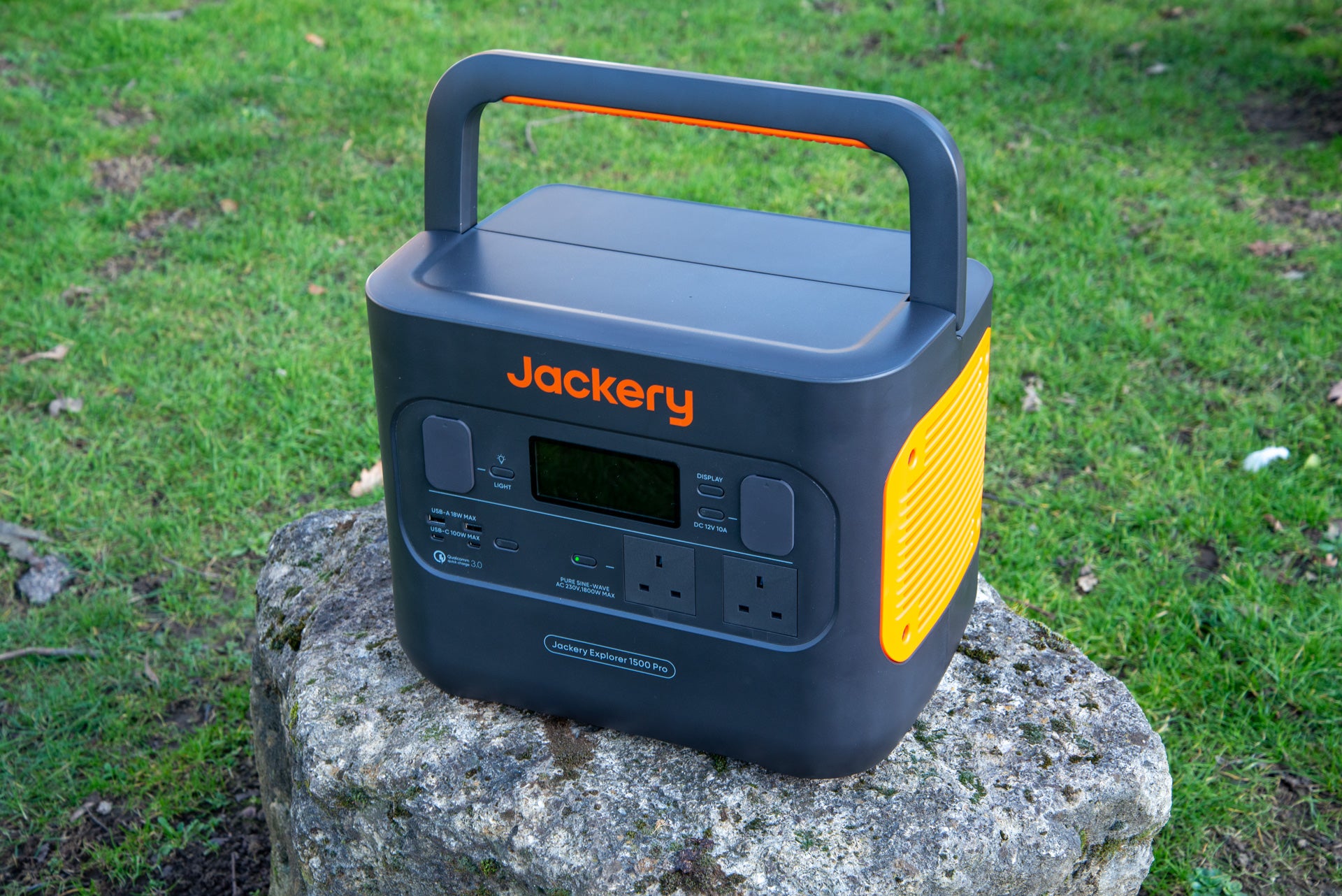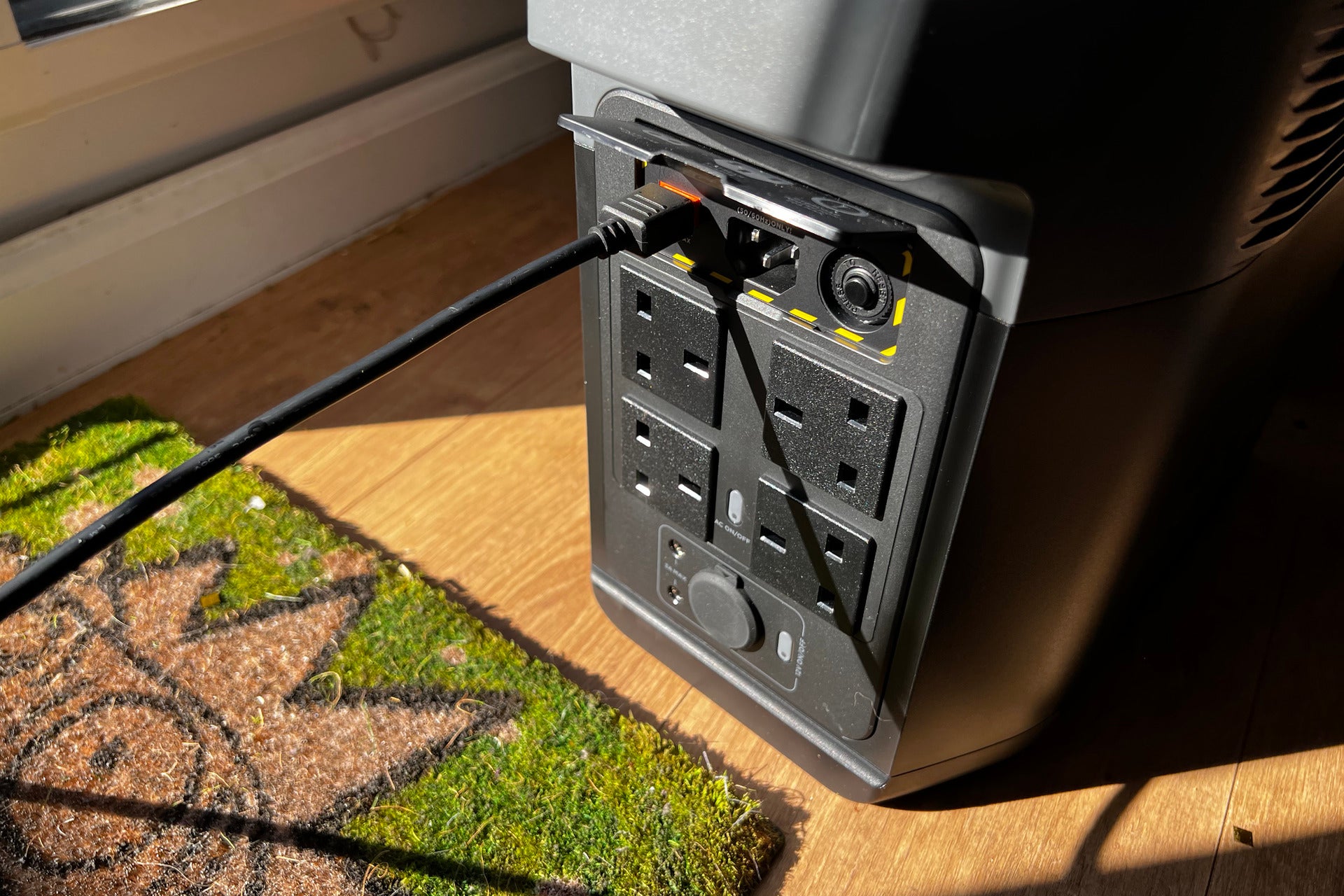Should I get solar panels?

Energy prices have hit the roof over the last year, so more people are looking closely at their actual roof and wondering if they should cover it with solar panels. The promise is amazing: bills reduced by free, silent, maintenance-free green power, but it’s still a big expense. Is it worth getting solar panels? Should you also get a battery? And when exactly can you expect to make your money back? Let’s see.
Sunny days
We may not live in the sunniest country, but the UK gets ample light to make the sun a viable source of clean energy. As of 2021, the UK’s total installed solar capacity was 14.6 gigawatts – capable of meeting about 40% of the country’s peak power demand. On a sunny day, there’s a chance that an industrial large-scale solar power plant is already feeding into the grid, keeping your lights on and your fridge cool. If your roof is baking away in direct sun, you could be benefitting more directly.
In the eight years since we moved into our house, I’d looked wistfully at its south-facing roof and slowly become obsessed with the amount of energy being wasted on sunny days. As energy prices rocketed, I finally bit the bullet and had it covered with solar panels. A week before the shortest day of the year.
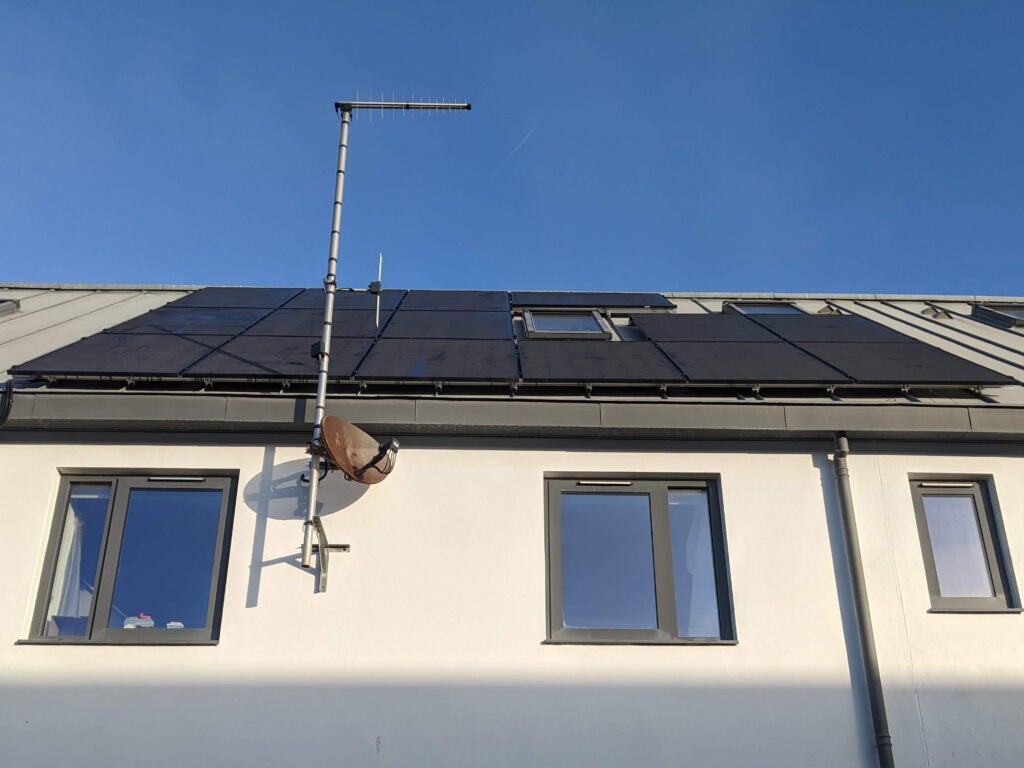
It’s safe to say we didn’t save much money at first, but as the days have lengthened and I’ve added a few more features to the system, we’ve already started seeing a return on the investment. So, what have I learned so far?
How do I pay for solar panels?
The price of solar panels has fallen by around 80% in the last decade, but they’re still a significant investment. They’re also only one part of a complete solar installation, with the other components plus the work of installing it all pushing up the price you’ll actually pay. Today, a typical home solar installation can range from around £4,000 up to £10,000 or more for bigger systems, or those with a battery.
There are loads of different ways of funding this, but if you don’t have the money up front, it’s common to look at grants or borrowing. At the time of writing the only government-supported grant is the Eco4 scheme, available to homeowners and some long-term tenants in receipt of certain benefits. If you don’t qualify, you may need to look at borrowing the money. So-called ‘rent a roof’ schemes still exist, where an installer provides a free or discounted installation in return for long-term rights to some of the power you generate, but these have been known to cause issues if they’re still active when the house is sold.
I paid for my panels by borrowing more on our mortgage, which raised our monthly repayments by about £50. I’m not qualified to give financial advice, and it’s important you talk to a financial advisor if you need to borrow to install your own solar panels. While you’re likely to save on your power bills – and you may make money selling excess electricity – you should be very careful when considering whether either would help you to pay off any loan over time.
What’s involved in a solar installation?
Most obviously, you’ll need a roof that’s capable of supporting a number of solar panels. It doesn’t have to be south-facing, but that’s the best orientation to get the most from the sun. Similarly, it helps if the roof’s unshaded and at a decent angle of around 45°, but it’s not essential. If you approach an MCS-certified solar installer, they’ll visit to ask questions and take some measurements, then come back with a plan for the installation.
You don’t usually need planning permission to install solar panels, but there are certain restrictions that a qualified installer will be able to check and explain.
It takes at least a couple of days to install solar panels. The installers will generally arrange everything, including scaffolding to keep them safe while they’re working on the roof. In most cases, they’ll need to anchor the solar panel mounting rails directly into your rafters, which means removing tiles at multiple points then weather-sealing the gaps. If you’ve got a metal roof, the rails can clamp directly to its seams, so there’s no need to disturb it to get to the rafters.
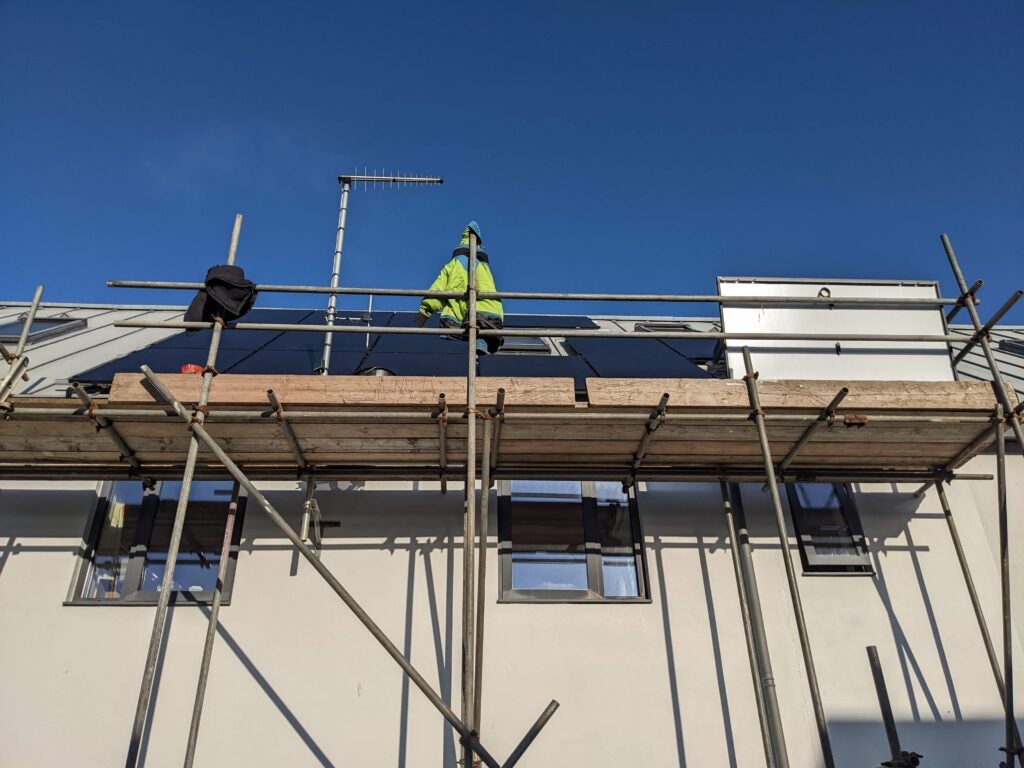
There’ll be at least one cable running from your panels, which needs to be routed to an inverter. This box converts the variable DC current from the panels into 230-volt alternating current that’s fed, via an export meter, into your home’s electricity supply. If you’re getting batteries, they’ll probably be cabled into this inverter, too.

What can I expect from my solar panels?
In theory, a solar installation could keep working for decades. The panels will degrade over time, but they usually have a design life of around 25 years, and in reality, they may keep generating for much longer. Inverters are unlikely to last that long, but they’re usually warranted for at least five years, and may well last a decade. A battery may lose its capacity over time, but again these are often designed for 10 years or so and warranted for five. MCS installers also offer a 10-year warranty against any workmanship defects.
Solar panels generate useful power with minimal maintenance, but they won’t always be pumping out their rated capacity. My 5.9 kilowatt (kW) system is limited by our inverter’s 5.3kW maximum output. In direct sun it’s been able to hit this maximum since late February, and as the days lengthen it spends a longer window either side of lunch time delivering power at or near that level. I’ve been surprised by this: even in mid-December, with the sun at its weakest, it could still deliver more than 2kW – enough for the peak power demand of the washing machine.
Any solar installation’s potential generating power depends greatly on the time of day and time of year – it’s obviously best when the sun’s high on long summer days – but in practice, weather can be just as big a factor. Even light, wispy cloud reduces our system’s output by as much as a third. Light grey skies might knock it down by two thirds, while heavy grey rain clouds can lower the output to just a couple of hundred watts – leaving us still using a little power from the grid.
What can I power with solar panels?
Solar energy can supplement what you’re drawing from the grid, reducing what you pay. At times it can stop you importing altogether. To get the most from it, it’s best to try and balance what you’re using against what you’re generating, so that you use the minimum from the grid.
As an example, on a sunny afternoon in March, a typical 4kW system might be producing 3kW. That’s almost certainly enough to power a major appliance, on top of a typical background household load. In fact, a washing machine only hits its peak power demand early in the wash cycle while it’s heating water. Use your solar system’s app or your smart meter’s in-home display to spot the end of this phase, and you’ll be able to start a second energy-hungry appliance, such as a dishwasher or dryer.
It’s not always that simple, however. Clouds can quickly slash the power you’re generating, leaving you drawing more from the grid than expected. Typically you’ll still be saving, but it’s best to keep laundry for the sunniest days with the most reliable solar output.
What about any spare power?
Just as there are times when you can’t generate enough electricity to power your home, there’ll often be times when you generate more than you need. This power passes seamlessly into the grid where it’ll be used by your neighbours. You’ll be paid for this, but the rates available aren’t particularly great.
In the past, the Feed-in Tariff (FiT) scheme guaranteed a generous price for every kilowatt hour (kWh) supplied to the grid, but this was replaced in 2019 by the Smart Export Guarantee (SEG), which is generally worth only about 5p per kWh, depending which energy supplier you sell to. There are exceptions – Octopus Energy lets you choose between a 15p/kWh fixed rate, or a variable rate based on that day’s wholesale electricity prices. Tesla Powerwall (battery) customers can get 22p/kWh.
I’m currently on Octopus’ fixed export rate, and its Agile import tariff, which follows electricity wholesale prices through the day. In sunny, breezy mid-May, I was buying electricity at far below the 34p per kWh cap, as shown in the first screenshot below. The second screen shows what we paid (positive amounts), or got paid (negative amounts) during a sunny week where my car consumed most of our excess generation. The third screen shows a large export figure for April, when I was away for two weeks.
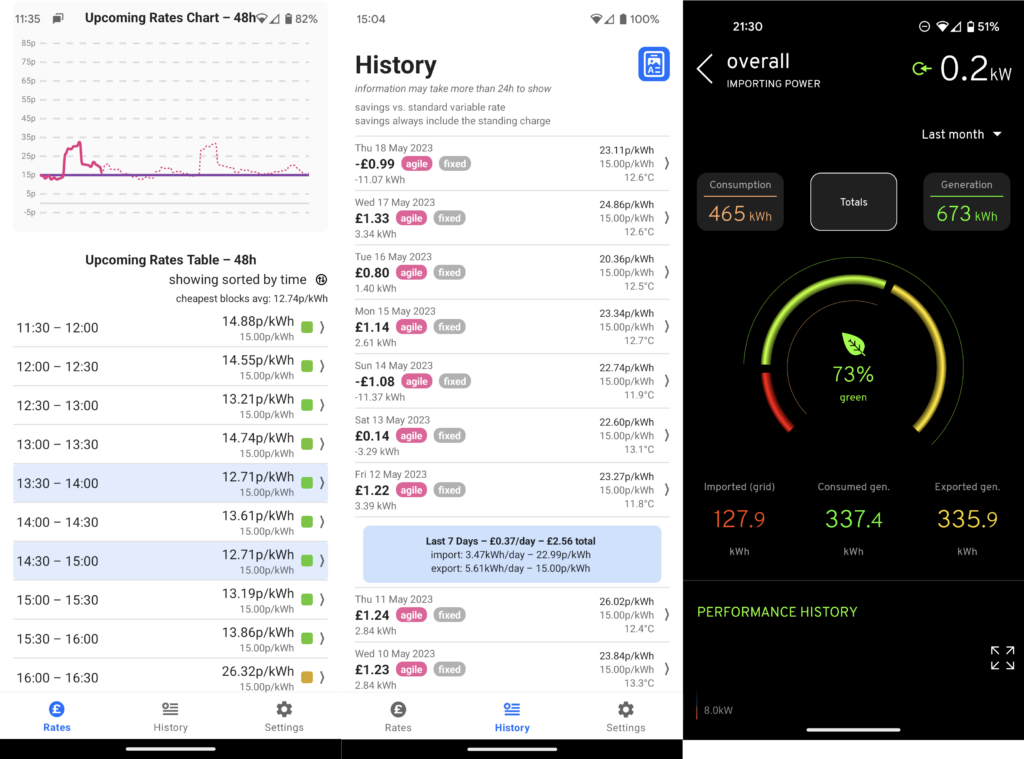
Even the best export rates are almost always less than the price you’ll pay to buy electricity, so it’s usually ideal to use as much of your own generation as you can. Several optional devices help you do this. Power diverters like the iBoost and the MyEnergi Eddi take any unused solar generation and divert it to your immersion heater, giving you free hot water. These can vary the power they’re diverting from just a few watts upwards, so they fit around the generation and other demand in your house.
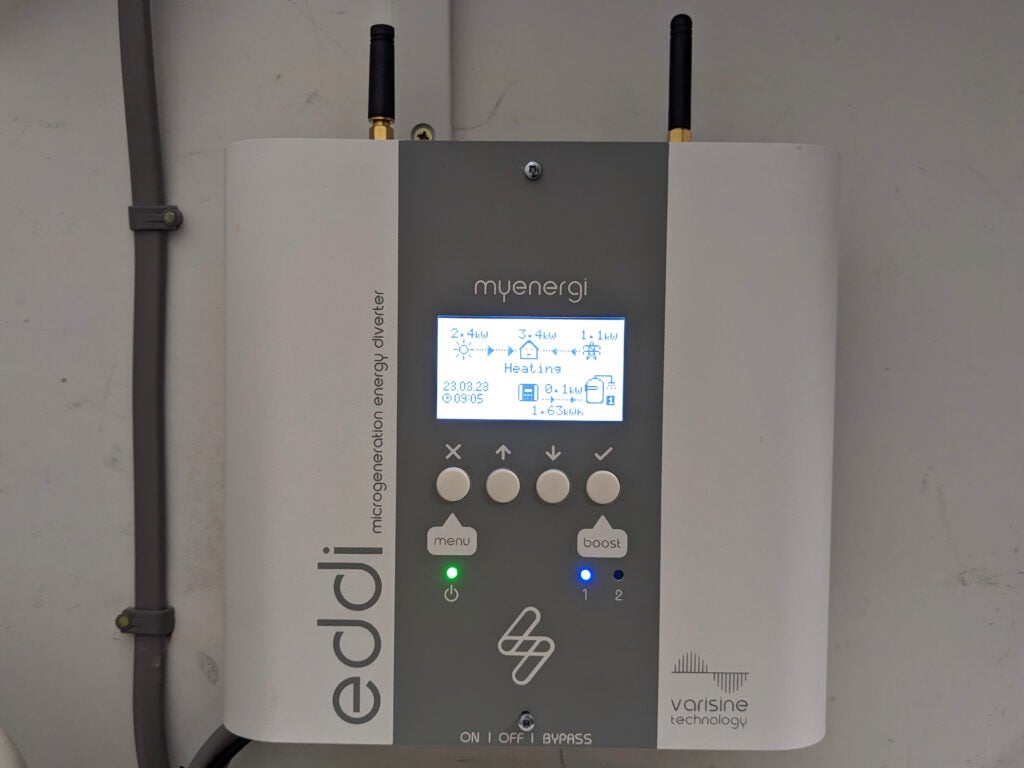
It takes eight or nine kWh to fully heat my210-litre water tank from cold. We don’t always have that much power spare over the course of a day, but when we do it saves us around £1 at current gas prices.
Another option for electric vehicle (EV) owners is to install a solar-aware charger. These look set to become more common, with brands including Ohme expected to add the feature, but at present the main option here is the MyEnergi Zappi. This can be scheduled like a normal smart charger, but also configured to start charging and adjust the rate to match your excess solar power. If you’re not in a hurry, you could fully recharge your car using just spare solar energy.
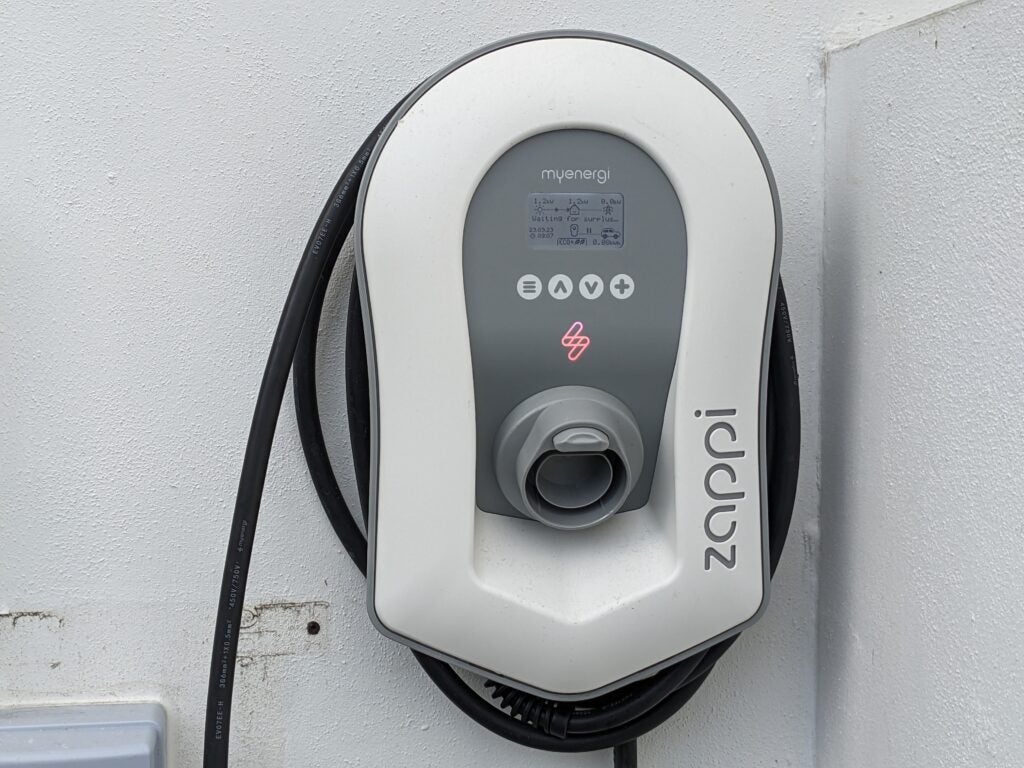
Charging my car to 80% takes about 50kWh – a huge amount of energy that could take two or three days to generate even when it’s sunny. But every time I manage it, I’m saving about £5 compared to cheap overnight charging, or £17 compared to a capped standard rate.
There are occasions when I can’t wait for the sun, though, meaning I need to schedule an overnight boost from cheap mains power – you can see this in the red rectangle in the right-hand screenshot below, representing consumption of about 7.4kW over four hours. The middle screenshot shows later that same day, with the car now charging at 3.6kW from solar power alone.

Should I get a solar battery?
There are a big range of batteries and capacities, and there’s no easy answer. I was advised that, with a water heater and solar car charger, we wouldn’t really have enough surplus energy to benefit. On one level that’s certainly true – on cloudy days we don’t have enough surplus power to even heat the water fully – but the reality is a bit more nuanced.
It turns out there are plenty of days when we’re generating a few hundred watts spare for a few hours. I don’t reach the roughly 2.5kW peak that would let us run an appliance without resorting to some mains power, but over the course of the day I generate more than enough electricity to run a couple of full wash or dishwash cycles. If I had a battery, I could store this spare energy while I’m generating it, and use it to avoid buying electricity when I wanted to run an appliance, or to avoid buying expensive electricity at peak times.
While this would help us save a bit more, it’s less easy to say how quickly a battery would pay for itself, as it depends on factors including how much power you generate, how much you use, and whether you have other places to store huge amounts of energy – such as an EV.
And, batteries don’t just have to be charged using solar energy, they can be topped up overnight using cheaper electricity if you’re on a split tariff. How this works varies between systems, but the most intelligent can estimate how much to top up using cheap power, and how much space to reserve for charging via solar power. Of course, the benefit of a battery is that you can then use the cheap power you harvested at night during the day.
Even so, getting the right balance can be hard, so it’s worth talking to your chosen provider to see how long a battery would take to pay back; it may work out cheaper to just stick with solar power alone and then use as much of the solar power you generate as possible.
Things are also changing rapidly. With a typical capacity of between 35 and 70kWh, an EV’s battery is the perfect place to store excess solar energy. Yet very few EVs support vehicle-to-home (V2H), which would let them supply power at times of peak demand. This is highly likely to become a widespread feature within five to 10 years, however, which may mean that a dedicated home battery isn’t such a great long-term investment.
There’s one final thing to mention about solar power and home battery storage: a standard installation isn’t able to maintain power to your home during a blackout. Most domestic systems are grid-tied, meaning they’ll only operate when there’s a grid supply, and they’ll shut down if it’s not there. This is for safety reasons, so that your system isn’t pumping electricity back onto the grid when an engineer may be required to work on it. Some battery systems can be configured with a backup supply, however, which comes via a dedicated plug socket. That’s similar to having a power station around your home, such as the Ecoflow Delta 2.
Final thoughts
There’s no easy, one-size-fits-all answer to whether you should get solar panels, but there are some certainties. Provided you’ve got an appropriate roof for it, a solar installation will save you money on your electricity bills. And on sunny days, a well-sized installation will earn you a small amount extra for the electricity you export.
In the five not especially sunny months since I had it installed, our 5.9kW system has generated 2,350kWh of electricity – about half the annual consumption of a typical four-bedroom home. We use about twice the norm thanks to our heavily used EV, and we’ve been on different, variable import and export tariffs, so it’s hard to put an exact figure on what we’ve saved. If I guess at a simplified, middling figure of 15p per kWh, it’s £350, but it’s likely to be considerably more.
Many solar installers have software to model your likely savings and when you might break even on your investment. For us, this was predicted to be after around 14 years – but the price of electricity nearly doubled after we got our quotes, meaning we might cover our costs much more quickly. Don’t forget, though, that if you’re borrowing money, the interest you’ll pay adds to the cost of the project and the time it’ll take you to break even.


